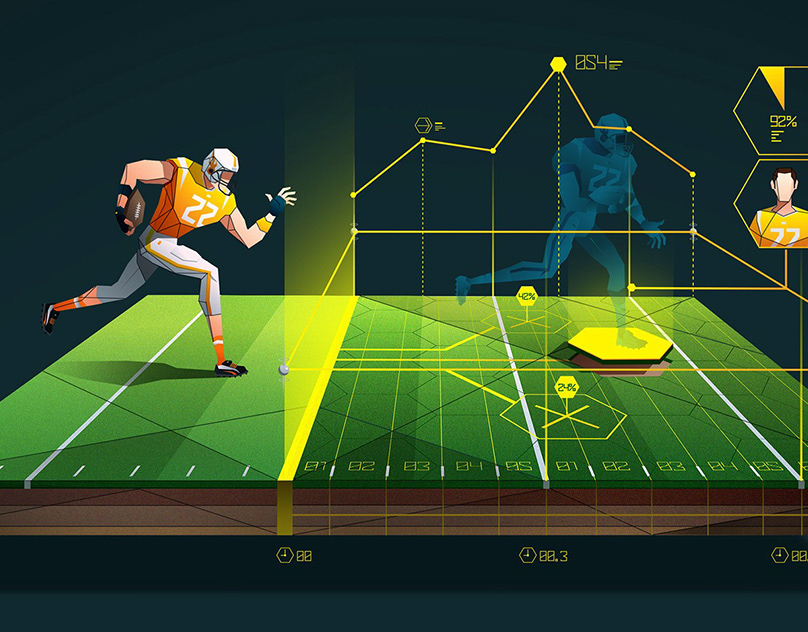
In sports betting, analyses and a strategic approach play an important role. One of the most effective tools in the bettor’s arsenal is the betting handicap, and many wonder what it is and why the concept has become so popular with punters. We’ll show you the most important aspects and tell you how to use this tool correctly to achieve the best results.
What is a handicap in betting?
A handicap is a way of equalising the chances of teams by giving one team an artificial advantage or disadvantage in terms of points. This decision is often made to make the game more interesting and less predictable. In answer to the question of what a handicap is in betting, we can say that it is a strategy that helps to equalise the strength of the opponents and thus make the encounter even more exciting.
Why is the handicap important for sports betting?
The advantage allows punters to make more accurate predictions and reduce risk. This is particularly useful when one team is obviously stronger than the other and a simple result is too predictable. The tool helps to even out this difference and make the bet more attractive and profitable. A handicap of +2.5 for the underdog, for example, offers the chance of a win even if it loses a few points, which expands the participant’s strategic options.
Handicap in betting: how it works
This is another way of betting on a level playing field. Handicap is the same as a handicap, but the term is more commonly used in international practice. It allows you to assign a certain number of points to one of the teams, which makes the game more interesting and changes the balance of power.
Advantage in betting: what it is and how to use a handicap correctly
Some useful tips:
- Choose games with a clear favourite to increase the odds.
- Take into account the current form of the team: the physical condition of the players and their recent performances.
- Evaluate the presence of key players and their influence on the result.
- Analyse previous encounters between teams to understand their style of play.
If you know how to work with a handicap, you can control the risk and increase your chances of winning. It is important to know in which games a handicap should be used and where it may be unnecessary. In games with a clear favourite, for example, it often makes sense to use the advantage to increase the odds.
How to bet on a handicap without making a mistake
It is necessary to study all possible options and types. The most important thing is to take into account not only the form of the teams, but also the internal characteristics of a particular match: the condition of the players, tactics, previous matches. For example, if a team regularly wins at home, a -1.5 bet in their favour makes sense. This is particularly important for those who are just starting out in betting and want to minimise their risk.
Types of odds in betting and their special features
Now that we have clarified the form, let’s look at the different types of odds, of which there are several: integer, fractional, Asian, European.
Integer bets usually mean that the stake is returned in full in the event of a draw, while fractional bets split the stake in two to minimise the risks. For example, if a handicap of +1.25 is selected, the bet is split into +1 and +1.5, which can save you some money on certain match outcomes. In the European variant, points are added to or subtracted from the overall result of a team as standard. The Asian variant, on the other hand, involves more complex fractional values that reduce the risk of winning bets and increase the chances of winning.
Examples of a handicap in sport: what it is in football, hockey and basketball
 The advantage is not limited to one sport. Let’s take a look at how it works in different disciplines.
The advantage is not limited to one sport. Let’s take a look at how it works in different disciplines.
What is an advantage in football: when and how is it used?
In football, the advantage is often used to equalise the difference in the level of the teams. For example, if a clear favourite is playing against an outsider, the bookmaker offers values such as -1.5 or -2.0 for the leader. This allows participants to choose more interesting odds and increase their chances of winning. This is particularly important in championship matches where teams from different regions of the table meet and it would be too easy to predict the result without a handicap.
Advantage in ice hockey: balance of power on the ice
This tool is used to create a level playing field for the teams, especially when one team is clearly superior to the other. In this case, the parameter is usually set in the form of whole numbers, which gives players more certainty when betting. A value of +1.5, for example, helps to compensate for possible errors in defence and increase the tension. This is particularly important in playoff games, where the opponents are often equally strong and any advantage can be decisive.
What is the backhand in basketball: games with high odds
This tool often helps to make the game more interesting for bettors as it is a high scoring game. For example, a +10 handicap can significantly improve the position of an outsider and create excitement in a game where there is a clear favourite. It also helps to diversify bets and choose the optimal odds that are favourable for the bettor.
Betting odds with a bookmaker: what is it and how to choose the right bet?
An important element to consider when choosing a bet. Different bookmakers offer different conditions and odds, so it is important to compare the odds and choose the best option.
Bet spread: what to consider?
The spread is the difference between the final result and the selected handicap. For example, if a player has chosen a handicap of -1 for team A, the team must win by a margin of two points in order to win. This adds strategy to the game and requires thorough analysis before selecting the parameters. Also bear in mind that weather conditions and the condition of top athletes can influence the final result, especially in football and ice hockey.
Tips for selection
To use a handicap successfully, several factors must be taken into account: the current form of the teams, statistics from past matches, weather conditions and even the composition of the teams. An optimal selection helps to increase the odds and make the bet more interesting. For example, if the main player of the national team does not play due to injury, this can strongly influence the selection of the handicap and the final result.
Conclusion
 What is a betting handicap? It is an important tool that helps to equalise the chances of the teams and create the conditions for a more interesting and profitable game. It’s not just numbers on a screen, but a strategy that requires analysis and deep understanding. Whether you are a beginner or an experienced bettor, using a handicapper will help you make more informed decisions and improve your results.
What is a betting handicap? It is an important tool that helps to equalise the chances of the teams and create the conditions for a more interesting and profitable game. It’s not just numbers on a screen, but a strategy that requires analysis and deep understanding. Whether you are a beginner or an experienced bettor, using a handicapper will help you make more informed decisions and improve your results.
Pick up this tool, learn to analyse games, choose your sports predictions wisely and betting will become not only a pastime but also an additional source of income.

 en
en  ru
ru  de
de  ar
ar  es
es  nl
nl  hi
hi  fr
fr  it
it  pt
pt  el
el 



